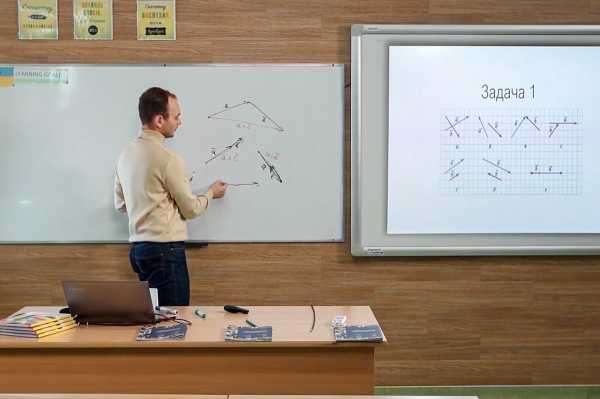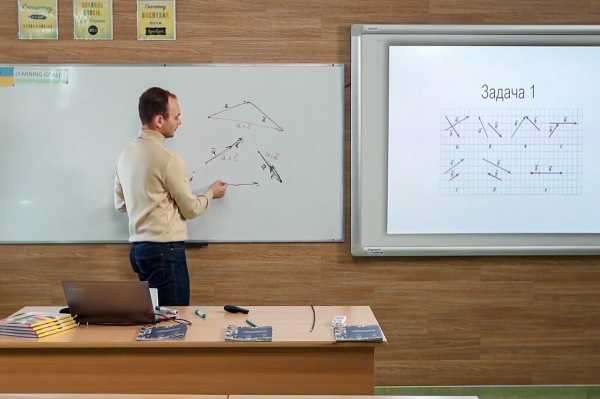Ukraine launches TV classes to provide distance education during quarantine

Latest news for today in Ukraine

For years, television was seen as a medium that distracted children from studying. Now, nearly a month after Ukraine shut down all schools to slow the spread of COVID-19, the country is using TV to help kids study remotely.
The new project is called the All-Ukrainian Online School. Launched by President Volodymyr Zelensky and implemented by the Ministry of Education and Science, it has put some of Ukraine’s best teachers to work bringing education into the home.
The teachers film basic lessons, which are aired daily on local TV channels. The classes are also published on the education ministry’s YouTube channel and through film streaming service Megogo.
“Our goal as a state is to provide every child with free access to knowledge,” Zelensky said in a video address announcing the launch of the initiative.
On March 12, the Ukrainian government implemented its first quarantine restrictions against COVID-19, which included closing all educational institutions.
Since then, restrictions have repeatedly been intensified. With 1,668 COVID-19 cases and 52 deaths as of early April 8, Ukraine is set to stay under quarantine at least until April 24. However, some officials say it might be extended until May 12.
That scenario would mean Ukraine’s 3.9 million schoolchildren will have two months of remote studies. That has been a challenge for both the children and the unprepared educational system.
So far, television classes appear to be among the most effective steps to overcoming it.
Challenge
When the government announced the quarantine, schools had to act fast to transfer their pupils to distance education to keep up with the curriculum. In Ukraine, every educational institution is allowed to choose its own tools for remote learning. But as they are rarely used, few schools had a prearranged plan.
Many teachers had to master online platforms and software on the cuff, while preparing lesson plans. Others — particularly in rural areas, where computer literacy and internet access are lower — decided to give assignments remotely and collect them in person.
“We weren’t ready,” says Dina Dashevska, a chemistry teacher with 20 years of professional experience in Khmelnytskyi, a city of 270,000 people located about 325 kilometers southwest of Kyiv.
Dashevska recently learned how to use the Google Classroom web service and video communications app Zoom. She now tries to make use of all tools available online — she makes presentations, attaches videos of chemistry experiments and shares insightful articles.
However, Dashevska says that some of the pupils from her school are currently staying with their grandparents in villages. They often have limited or no access to the internet, and no computers.
“They just don’t have an opportunity to work with these platforms,” Dashevska told the Kyiv Post.
However, most households, even in rural areas, have TVs. That’s where the education ministry’s initiative comes in handy.
“Everyone can watch TV,” Dashevska says.
Additionally, the fixed schedule of lessons on TV may help organize the students’ lives under quarantine. Dashevska says that, until now, children turned to assignments at any time of day and “started to live in chaos.”


A teacher holds a geometry class, which is shot for the All-Ukrainian Online School initiative. The state project, which airs lessons on Ukrainian television channels, aims to help pupils with studying remotely, as they stay home under the quarantine established amid the COVID-19 outbreak. (MON Ukraine/YouTube)
Enlightenment
On April 6, 12 Ukrainian TV channels started airing lessons as part of the online school initiative. They run from Monday to Friday starting at 10 a.m. and include up to five lessons a day.
Together with 40 Kyiv-based teachers, the education ministry developed a universal curriculum for grades 5 through 11. Every grade has its own schedule and a channel or two airing its classes.
For the project, the team picked 11 fundamental subjects such as Ukrainian and English languages, Ukrainian literature, geography, biology, chemistry, physics, algebra, geometry and Ukrainian and world history.
Shot at one of Kyiv’s schools, each lesson features a teacher delivering a lecture on a topic. Each lesson lasts 30 minutes, which is 15 minutes less than usual — teachers would normally spend that time checking pupils’ assignments and explaining new ones.
Pupils can find assignments to do in the description section of the videos. They are based on the country’s most widely used textbooks.
According to Zelensky’s website, the television channels agreed to join the project at the president’s request. They now give up around two hours of their airtime daily for the school initiative.
Two of the channels are UA:Pershyi and UA:Kultura, which are managed by Suspilne, Ukraine’s public TV and radio broadcasting company.
Director and radio host Yaroslav Lodygin, a member of the broadcaster’s board, says that it was a natural move for the company to join the initiative, since part of its mission is educating the public.
“Until the usual educational process is resumed for students, such projects are strategically important for the whole society,” Lodygin told the Kyiv Post.
Lodygin says that UA:Pershyi had to shorten its popular morning show about the quarantine and move some series to a later time. They expect that their morning viewership will decrease and revenue from advertisement might fall.
“However, helping to set up an education process at a time of crisis is a more important task for the public broadcaster than earning money,” Lodygin said.
Entertaining approach
The initiative has asked parents to keep an eye on their children’s schedules and encourage them to watch the lessons on TV.
However, pupils might not need much extra encouragement.


The project brought some of Ukraine’s best teachers onscreen. They have years of experience and know their subjects inside out. They use visuals shown on projector screens, equipment which most of the Ukrainian classrooms lack.
The initiative also uses humor to make lessons more entertaining for children. Ukrainian celebrities are invited to attend the classes and refresh their memory on what they learned in school. They occasionally make mistakes and joke around, showing students that being wrong is part of the learning process.
The guest stars include first lady Olena Zelenska, rapper Alina Pash, Greco-Roman wrestling champion and lawmaker Zhan Beleniuk and others.
In between the lessons, the project shows videos with light physical training encouraging children to get a little exercise. These also feature some of Ukraine’s well-known athletes and dancers.
Daryna Kolesnyk, a 10-grader from Severodonetsk, a Luhansk Oblast city of 100,000 people located about 800 kilometers northeast from Kyiv, says she has enjoyed all of the classes she watched on TV so far.
Her school teachers provide distance education by giving her and her classmates lessons to learn and assignments to complete, Kolesnyk says. Although teachers do their best to consult with pupils by phone, she says studying became “much harder.”
“Sometimes you don’t understand a topic, but you still have to accomplish the task somehow,” Kolesnyk told the Kyiv Post.
The 15-year-old student says that TV lessons might help her with new topics. In fact, she says that they might even be more effective than regular lessons. Unlike in classrooms, she says, she doesn’t get distracted in front of the TV.
“This way, it’s much easier to memorize information,” she says. “It’s a very good idea for children.”
As of April 8: 52 people have died from COVID-19 in Ukraine; 35 people have recovered.
5 Ukrainians died from the novel coronavirus abroad; 15 recovered.
1,668 confirmed cases of COVID-19 in Ukraine as of early April 8. The first case was identified on March 3.
Ukraine has extended its quarantine measures until April 24.
Infographic of quarantine measures in place until April 24.
The measures shuttered most everything but hospitals, supermarkets, pharmacies, banks, gas stations, and other critical enterprises.
How the Ukrainian government has been responding: TIMELINE
Misinformation on coronavirus is going viral in Ukraine.
Foreign Ministry: What you need to know about traveling to and from Ukraine now
Why the Kyiv Post isn’t making its coverage free in the times of COVID-19.
Coronavirus stops the Kyiv Post’s print edition for now.
Where to buy masks.
Effects on the economy:
COVID-19 is already inflicting harm on Ukraine’s economy.
Invisible Threat Lurks Undetected: Top stories from March 27, 2020 PDF edition.
The former minister of economy says half a million Ukrainians may lose their jobs in the COVID-19 crisis.
Source: www.kyivpost.com